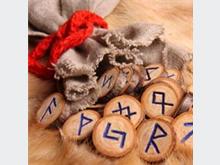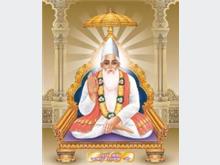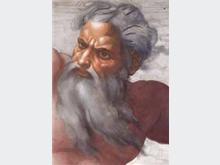This season, with well-known holidays like Yom Kippur and Ramadan in the public eye, most Americans are aware of the religions (Judaism and Islam) that celebrate these holidays. But the world is made up of adherents of countless faith traditions–many more than the religions like Christianity, Buddhism, Hinduism, and others that we read about on a daily basis. Those faiths dominate the headlines, but many other belief systems dominate the lives of millions of people throughout the world. Think you’re an expert on world religions? We bet this list of obscure faiths will make you think again. Take a look at these five religions you’ve never heard of to learn more.
 1. Asatru: Faith of the Vikings: You may be aware of neopaganism, or the modern revival of ancient pagan customs and beliefs, but the followers of these ancient religions are actually a lot more complicated than popular culture lets on. One faith that fits into the broad neopagan or reconstructionist category is Asatru, a modern revival of the beliefs in the ancient Gods of the Germanic and Nordic peoples. These gods include Freya, Thor, Odin, and others.
1. Asatru: Faith of the Vikings: You may be aware of neopaganism, or the modern revival of ancient pagan customs and beliefs, but the followers of these ancient religions are actually a lot more complicated than popular culture lets on. One faith that fits into the broad neopagan or reconstructionist category is Asatru, a modern revival of the beliefs in the ancient Gods of the Germanic and Nordic peoples. These gods include Freya, Thor, Odin, and others.There is no central authority or organization in Asatru, so beliefs and practices vary. In general, Asatruar believe that life is good and should be lived with boldness and enthusiasm, and value courage, honor, industriousness, and personal responsibility. Gathering by “hearths” and “kindreds” they honor the Gods, ancestors, and tribal connections to family and kin. One reason you may not have heard of them: Asatru is a rather small religion. Some experts believe there are between 10,000 to 20,000 Asatruar in the United States. Although a small number of white supremacists have claimed to follow Asatru, generating controversy in the news, they are not representative of Asatru at large. Learn more about Asatru here.
 2. Sant Mat: Heaven Within: Sant Mat, which means “teachings of the saints,” teaches that everything lies inside us and that God is within. Revived in 1891 from a 13th century practice, and spreading to North America and Europe in the 1950s-1960s, Sant Mat is a practical path of spiritual self-development based on Sikh traditions, with Sufi influences. Through a simple version of Yoga known as Surat Shabd Yoga, practitioners learn to listen within for the Inner Light and Sound of God.
2. Sant Mat: Heaven Within: Sant Mat, which means “teachings of the saints,” teaches that everything lies inside us and that God is within. Revived in 1891 from a 13th century practice, and spreading to North America and Europe in the 1950s-1960s, Sant Mat is a practical path of spiritual self-development based on Sikh traditions, with Sufi influences. Through a simple version of Yoga known as Surat Shabd Yoga, practitioners learn to listen within for the Inner Light and Sound of God.Sant Mat is a solitary practice done in one’s own home for 2 1/2 hours each day, while remaining in one’s present religion (Sant Mat teaches that all major world religions are rooted in the same Divinity). Followers are strict vegetarians and do not consume alcohol or recreational drugs. Sant Mat emphasizes an ethical lifestyle, selfless service, nonviolence, truthfulness, and love for all. It is unknown how many followers of Sant Mat there are in the world. Learn more about Sant Mat here.
 3. Eckankar: Dream Better: Eckankar, an offshoot of Sant Mat, was founded by Paul Twitchell in 1965 following his studies with Sant Mat masters from India and Tibet. Like Sant Mat, Eckankar emphasizes meditation to listen to the Inner Light and Sound of God, but also teaches lucid dreaming, past life discovery, and soul travel as ways of hearing God.
3. Eckankar: Dream Better: Eckankar, an offshoot of Sant Mat, was founded by Paul Twitchell in 1965 following his studies with Sant Mat masters from India and Tibet. Like Sant Mat, Eckankar emphasizes meditation to listen to the Inner Light and Sound of God, but also teaches lucid dreaming, past life discovery, and soul travel as ways of hearing God.Eckists describe the Inner Sound as “the voice of God calling us home” and the Inner Light as “a beacon to light our way.” Through chanting, contemplation, meditation, singing, trance work and visualization, Eckists seek to reunite the soul with God. Like Asatru, Eckankar is a relatively small religion in the U.S. A 2001 study found 26,000 Americans identify as Eckankar followers.Learn more about Eckankar here.
 4. Ahmadiyya: Heretics or Reformers? The Ahmadiyya is probably the largest of the religions you’ve likely never heard of, with a whopping estimated eight million followers in seventy countries. The Ahmadis are a messianic Muslim sect based in Pakistan. The Ahmadi movement was founded in 1876 by Mirza Ghulam Ahmad, a Punjabi Muslim believed by his followers to have been the Mahdi, or Messiah, sent to reform and purify Islam.
4. Ahmadiyya: Heretics or Reformers? The Ahmadiyya is probably the largest of the religions you’ve likely never heard of, with a whopping estimated eight million followers in seventy countries. The Ahmadis are a messianic Muslim sect based in Pakistan. The Ahmadi movement was founded in 1876 by Mirza Ghulam Ahmad, a Punjabi Muslim believed by his followers to have been the Mahdi, or Messiah, sent to reform and purify Islam.Members of the movement are considered heretics by most Muslims and are barred entry to Mecca. This ex-communication of sorts may be one reason Ahmadis don’t get much attention in popular culture–even the government of Pakistan doesn’t recognize them as Muslims. Learn more about Ahmadiyya here.
 5. Maltheism: God vs Humanity: Most religious adherents follow their chosen faith because they believe their god is good; if not, they’re unlikely to believe in God. But what do you do if you believe in God but believe that God is evil? Maltheism might be right for you. Maltheism is the belief that God does exist, and that God is evil. Maltheists see God as the true spiritual enemy of humanity, and oppose God because of this.
5. Maltheism: God vs Humanity: Most religious adherents follow their chosen faith because they believe their god is good; if not, they’re unlikely to believe in God. But what do you do if you believe in God but believe that God is evil? Maltheism might be right for you. Maltheism is the belief that God does exist, and that God is evil. Maltheists see God as the true spiritual enemy of humanity, and oppose God because of this.The Maltheist movement was founded by Paul Zimmerman, who passed away in 2003, when he coined the term in 1985 to explain that God was not a “Creator-God” but a “Damager-God.” Zimmerman’s motto was “God against Humanity: choose a side!” Maltheists believe the most important thing is how we treat each other as human beings, and they support the self-empowerment of the human race. It is unknown how many people follow Maltheism. Learn more about Maltheism here.
Did these five faiths whet your appetite for more knowledge about faiths you’ve never heard of? Check out the more than 100 faith groups represented on Beliefnet Community.
By Martha Ainsworth
